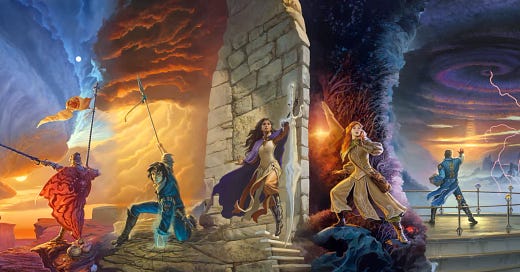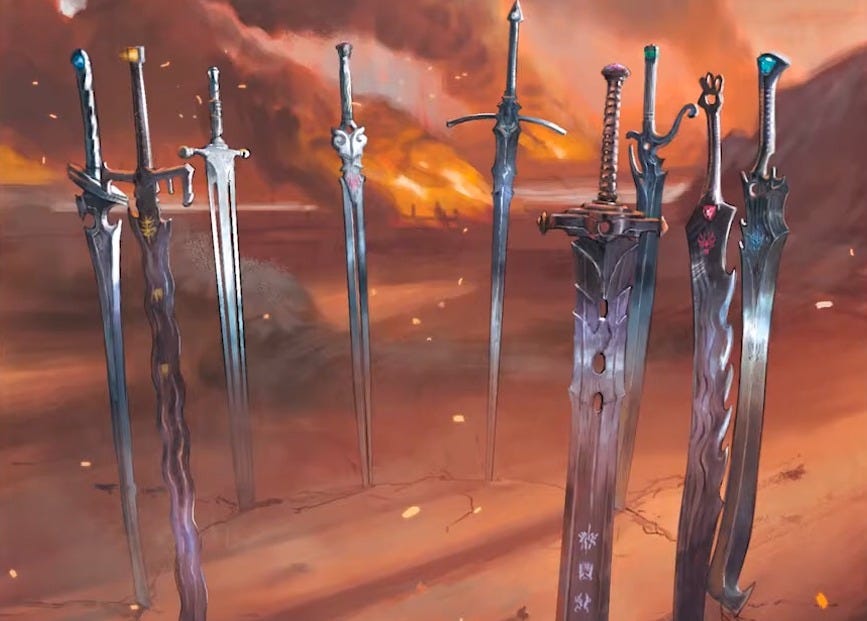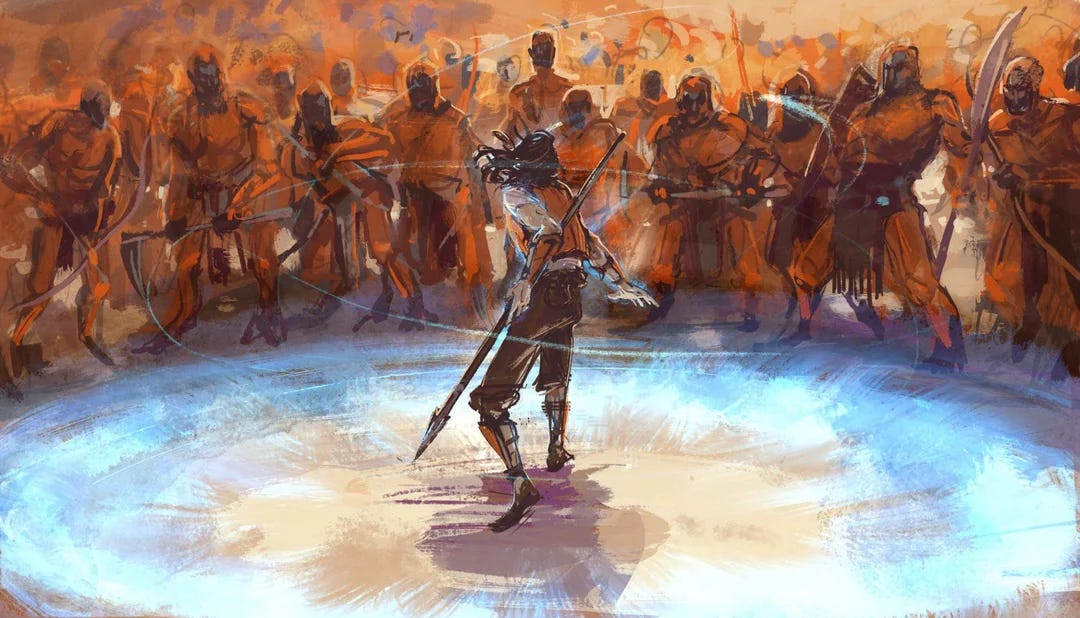With the release of its fifth book, and the conclusion of its first half, Brandon Sanderson’s book series The Stormlight Archive is currently the hottest topic in epic fantasy. The release of book 5 (Wind and Truth) last December has been met with some very mixed feelings. I got into Stormlight last year, and finished Wind and Truth just recently, so this seems like the perfect time to talk about it.
Premise
The Stormlight Archive is set on Roshar, a planet of unique ecosystems shaped by massive, periodic hurricanes. Key characters are Kaladin, a soldier-turned-slave; Shallan, a mentally unstable scholar, and Dalinar, a warlord seeking unity. Together, they confront the return of the Voidbringers and the resurgence of the Knights Radiant, mystical warriors who wield incredible powers.
Positives
Characters
Sanderson’s strongest point is his characters. These are incredibly detailed, and a lot of time, probably more than necessary, is spent fleshing out their backstories and motivation. Watching these characters grow and change, move towards the light or fall into the darkness, is always incredibly interesting. The best moments in the series are the ones where they interweave major plot points with character moments. Dalinar’s redemption arc, Kaladin learning to love himself, Renarin gaining confidence and Shallan overcoming her past all come to mind. I love how the Radiant Oaths do this by tying power with character growth. Whenever a character swears an oath it’s always an epic moment.
The villains, whom I cannot say much about without spoiling you, are also fantastic. They work incredibly well as foils for the heroes, challenging them in unique ways.
I don’t normally care for romance in fantasy — a lot of the time it just feels like the authors are ticking a box. Sanderson doesn’t have this problem; both here and in his other works, I enjoyed the interactions between his characters and love interests.
Worldbuilding
The amount of thought and detail that went into creating the world of Roshar is obvious. The geography and ecology is completely unique to earth, but still feels… well, not realistic, but definitely logical. The history of the world is slowly revealed, and it has a depth beyond what we are shown in the story.
Magic system
Surgebinding is, in my opinion, Sanderson’s best magic system. I read Mistborn a couple of years ago, and I could not keep track of which metal did what. Stormlight doesn’t have this problem; each order of Radiants and their powers feel unique and interesting. The use of these powers in creative ways leads to some of my favorite fight scenes in the fantasy genre.
Endings
The best part of each book in the series is its ending. The climax and conclusion of the book is where everything ramps up to 11 — the character growth, action, plot twists and epic moments of the book, with multiple plot threads tying together into one big finish. The battle of the Tower, Narak, Thaylen Field, Urithiru and the Contest of Champions all wrap up their respective books in an epic and satisfying way.
Wind and Truth does this best. It needed to be a satisfying conclusion to the first part of the series while simultaneously setting up the second part. A tall order, but it completely exceeded my expectations.
Mental health
The Stormlight Archive has a nuanced and empathetic portrayal of mental illness. Characters struggle with trauma, depression and PTSD, mental scars from war and abuse. Some use unhealthy coping mechanisms to deal with their pain Others work through it, and try to keep going despite their trauma.
Representation
A lot of the criticism for Wind and Truth comes from the fact that it includes gay characters. All that needs to be said on this is that homophobia is dumb. Representation FTW.
Negatives
Prose
Sanderson’s prose is his biggest drawback, in my opinion. In most places, it is serviceable but bland; in others it is distractingly clunky. His humor and jokes are also a major point of criticism for many people. While I do agree that it is steeped in bathos and almost MCU-esque at times, I don’t have as much of a problem with it as other people seem to.
Use of modern terms
One problem I have is the use of modern terms in a way that breaks immersion. In Wind and Truth, a character attempts to help other characters work through their mental health issues. While I enjoyed this part of the story, and it made sense for the character, I didn’t like it when the character began to refer to themselves as a ‘therapist’. In a fantasy world, the use of a term associated with modern-day society just broke immersion for me. I feel like it was an unnecessary addition that could have been replaced by another term that felt more internally consistent with the fantasy setting.
Editing
Each book in The Stormlight Archive is over a thousand pages long. I feel like a lot of these pages, especially in the later books as they get longer and longer, could have been cut without affecting the story. This is especially true of the Interludes, which are either the most interesting or the most boring parts of the story, as well ad the many unnecessary exposition dumps.
Downsides of hard magic systems
I’ve written about this before, but Sanderson’s type of magic and worldbuilding has its disadvantages. It is detailed, logical and internally consistent. However, not everything needs to be explained. Sometimes, the magic feels more like science than anything else. A lot of the time, Sanderson’s work fails to capture that sense of magic, of mystery and wonder, that is characteristic of the fantasy genre.
Conclusion
No book or story can truly call itself perfect. Every one will have some, flaw, some imperfection. Such is the case with The Stormlight Archive. However, at least for me, its strengths far outweighed its flaws. The characters, world, magic, themes and inclusivity made this one of my favorite fantasy series ever.









The bit on the use of modern terms is interesting, because Dragon Age: The Veilguard (my white whale of bad fantasy media) did this in a very similar way. 'Therapist' is basically the only modernism it doesn't use, which is strange given that so much of the dialogue given to the main character is 100% therapeutic language, which is used in a really obvious and cringey way.
What it does use ad nauseum is 'team' (disgustingly corporate language, and inappropriate in the context), and it also uses non-binary, a term most people probably hadn't heard of before the 2020s, which makes it sound very jarring in-game. They even threw out a perfectly serviceable in-universe term which conveyed the same idea.
But maybe Stormlight can get away with the odd modernism, if it actually discusses trauma in a meaningful way? Veilguard's problem is that it's so globally terrible that you basically can't overlook any individual facet.
Interesting and well analysed. I hope to read these some day